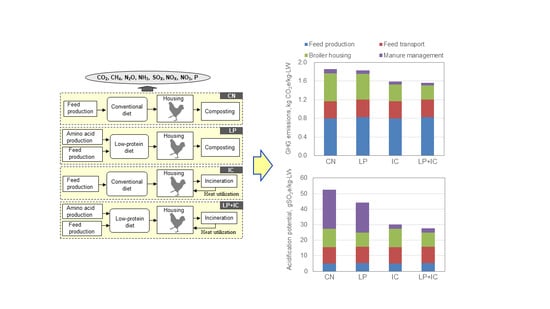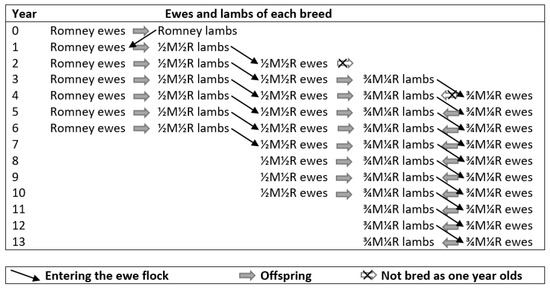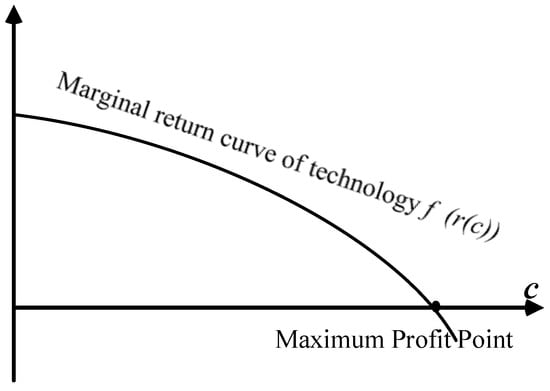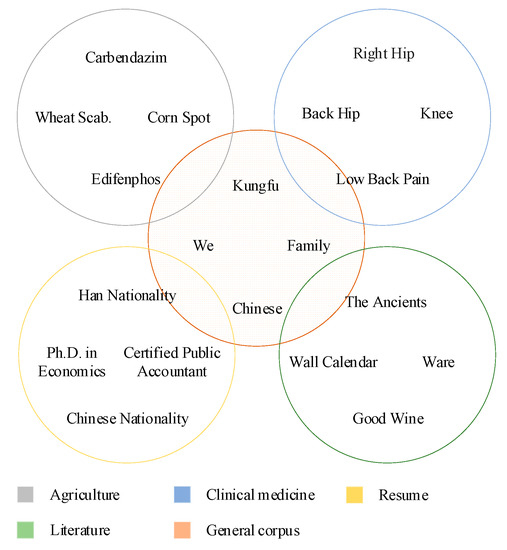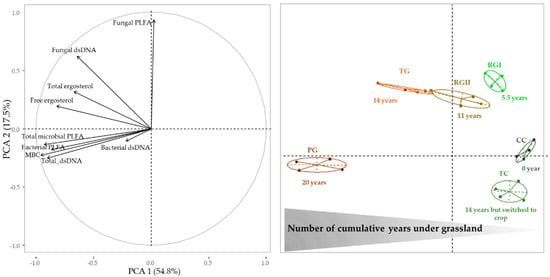Agriculture 2021, 11(10), 921; https://doi.org/10.3390/agriculture11100921 - 25 Sep 2021
Cited by 16 | Viewed by 6568
Abstract
We conducted a life cycle assessment (LCA) to compare environmental impacts of conventional (CNV) broiler chicken production in Japan with those of three mitigation options: a low-protein diet supplemented with more crystalline amino acids (LP), incineration of broiler litter (IC), and their combination
[...] Read more.
We conducted a life cycle assessment (LCA) to compare environmental impacts of conventional (CNV) broiler chicken production in Japan with those of three mitigation options: a low-protein diet supplemented with more crystalline amino acids (LP), incineration of broiler litter (IC), and their combination (LP + IC). Feed production, feed transport, broiler housing, and manure management were included in the LCA, with 1 kg of liveweight of broiler chicken as the functional unit. The CNV environmental impacts were: climate change, 1.86 kg CO2e; acidification, 52.6 g SO2e; eutrophication, 18.3 g PO4e; energy consumption, 18.8 MJ. Since broiler manure management has a lower N2O emission factor, the LP diet’s effects on greenhouse gas (GHG) emissions were limited. Because a large amount of ammonia is emitted from broiler-litter composting and the LP diet reduced nitrogen excretion and consequent NH3 emission, the LP showed lower acidification and eutrophication potentials than CNV. The IC system reduced fuel consumption by utilizing the generated heat for broiler-house heating and thus had lower GHG emissions and energy consumption; it reduced ammonia emission from the manure-management process by incineration and thus had lower acidification and eutrophication potentials even when including NOX generation by litter incineration. The LP + IC system had lower environmental impacts than CNV: for climate change (by 16%), acidification (48%), eutrophication (24%), and energy consumption (15%). Mitigation opportunities for broiler chickens remain, and broiler production systems with mitigation options help produce chickens more sustainably.
Full article
(This article belongs to the Special Issue Greenhouse Gas Emissions and Life Cycle Assessment of Livestock Production Systems)
►
Show Figures
